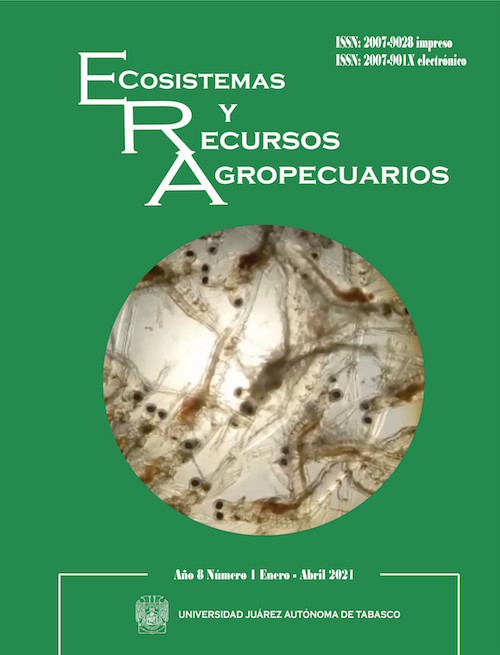EXTRACTOS DE Sargassum spp. COMO INDUCTORES DE TOLERANCIA A Fusarium oxysporum EN PLÁNTULAS DE TOMATE
DOI:
https://doi.org/10.19136/era.a8n1.2826Abstract
Fusarium oxysporum is one of the most destructive pathogens with wide distribution and devastating effects on vegetables. An alternative to mitigate the damage caused by F. oxysporum is the use of biostimulants, since they promote a defense response in stressful situations. The objective of this work was to evaluate the biostimulant potential of hydroalcoholic extracts of Sargassum spp. (SAR) to increase tolerance to infection by F. oxysporum in tomato seedlings. In total, 17 extracts were evaluated, which were applied in a foliar way to the seedlings at 7, 12, 22, 33 and 43 dat (days after transplantation). The induction of tolerance of the SAR extracts was evaluated in terms of incidence and severity of the disease and agronomic variables. The E12 extract showed better disease control with 17% less severity of symptoms with respect to the infected control.
Downloads
Downloads
Published
Issue
Section
License
Copyright (c) 2021 Ecosistemas y Recursos Agropecuarios

This work is licensed under a Creative Commons Attribution-NonCommercial-ShareAlike 4.0 International License.
Aviso de copyright
Los autores que se envían a esta revista aceptan los siguientes términos:
una. Los autores conservan los derechos de autor y garantizan a la revista el derecho a ser la primera publicación del trabajo con una licencia de atribución de Creative Commons que permite a otros compartir el trabajo con un reconocimiento de la autoría del trabajo y la publicación inicial en esta revista.
B. Los autores pueden establecer acuerdos complementarios separados para la distribución no exclusiva de la versión del trabajo publicado en la revista (por ejemplo, en un repositorio institucional o publicarlo en un libro), con un reconocimiento de su publicación inicial en esta revista.
C. Se permite y se anima a los autores a difundir su trabajo electrónicamente (por ejemplo, en repositorios institucionales o en su propio sitio web) antes y durante el proceso de envío, ya que puede conducir a intercambios productivos, así como a una cita más temprana y más extensa del trabajo publicado. (Consulte El efecto del acceso abierto).

